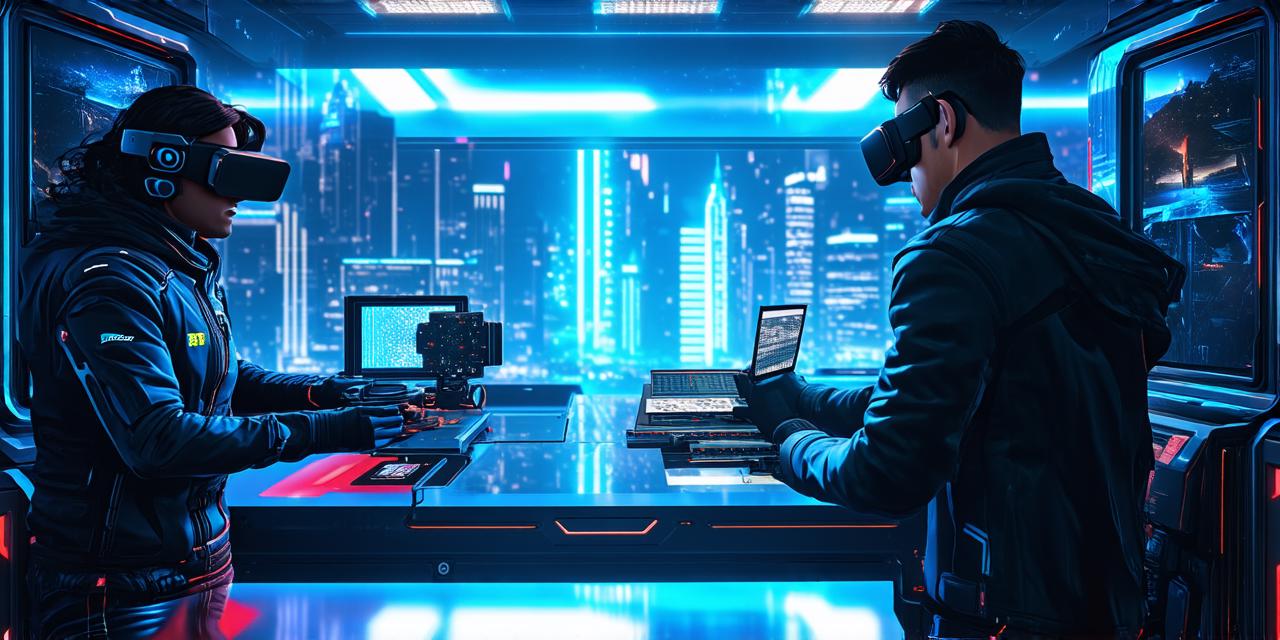Virtual reality (VR) technology has been gaining popularity in recent years, with more businesses and individuals using it for various purposes. VR offers immersive experiences that can be used for training, entertainment, and even therapy. In this article, we will explore the benefits of using virtual reality and how it can enhance productivity and creativity.
One of the main benefits of virtual reality is its ability to create realistic simulations. This allows users to experience things that they may not have been able to in real life. For example, a car manufacturer can use VR technology to test their designs before building physical prototypes. This saves time and money while also allowing them to make changes and improvements before production begins.
Another benefit of virtual reality is its ability to enhance training and education. With VR, users can experience simulations that replicate real-world scenarios. This allows them to learn and practice skills in a safe and controlled environment. For example, medical students can use VR to practice surgeries or emergency procedures without risking the safety of real patients.
Virtual reality can also be used for therapy and rehabilitation. Patients can use VR simulations to mimic real-life situations and overcome their fears or anxieties. This has been shown to be particularly effective in treating phobias such as heights, spiders, and public speaking. In addition, VR technology can be used to help patients with physical injuries or conditions regain mobility and independence by simulating movements and exercises.
Virtual reality also offers a unique way for businesses to enhance customer experiences. With VR, users can explore products and services in 3D, allowing them to see and interact with them in ways that were previously impossible. This has been particularly effective in the real estate industry, where virtual tours have become popular alternatives to traditional property viewings.
Furthermore, virtual reality can also be used for marketing and advertising. Brands can use VR simulations to showcase their products or services in a way that is engaging and immersive. This can help them stand out from competitors and attract new customers. For example, a car manufacturer can create a VR simulation of their vehicles driving on different tracks and terrains to give potential buyers a better understanding of the car’s capabilities.
In addition to these benefits, virtual reality can also enhance creativity and innovation. By allowing users to experience things in new and immersive ways, VR can inspire new ideas and perspectives. For example, an architect can use VR technology to design and visualize a building’s interior, allowing them to make changes and improvements before construction begins.
Moreover, virtual reality can also be used for remote collaboration. With VR, teams can work together in real-time, regardless of their location. This allows for more efficient communication and better decision-making. For example, a design team can use VR technology to collaborate on a project, with each member working on different aspects of the design simultaneously.
Finally, virtual reality can also be used for entertainment purposes. With VR, users can experience games, movies, and other forms of entertainment in ways that were previously impossible. This has led to the creation of new genres of entertainment, such as interactive theater and immersive gaming experiences.
In conclusion, virtual reality technology offers numerous benefits that can enhance productivity and creativity. From testing designs and products to enhancing customer experiences, virtual reality is becoming an increasingly popular tool for businesses and individuals alike. As the technology continues to evolve, we can expect even more exciting and innovative uses of VR in the future.
FAQs:
1. Is virtual reality only for gaming and entertainment?
No, virtual reality has many practical applications beyond gaming and entertainment. It can be used for training, education, therapy, marketing, and more.
2. How does virtual reality enhance productivity?
Virtual reality offers realistic simulations that allow users to practice skills and make improvements before production begins, saving time and money. It also allows for remote collaboration, improving communication and decision-making.
3. Can virtual reality be used for therapy and rehabilitation?
Yes, virtual reality can be used to simulate real-life scenarios and overcome fears or anxieties. It can also be used to help patients with physical injuries or conditions regain mobility and independence by simulating movements and exercises.
